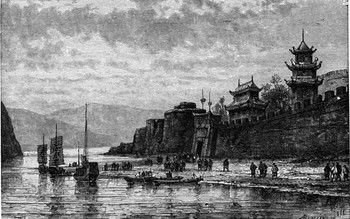The Huang He River
The Huang He is the world's sixth-longest river at 3,395 miles. Its source is the Kunlun Mountains, in western China. Its mouth is the Gulf of Bohai. The river is called the Yellow River, named for the color of the silts that are carried downstream in its flow.
The river is also a bringer of commerce. Ships of many sizes still sail up and down the river, just as they have done for centuries. The river has changed course in a major way at least five times that we know of, the last one taking place in 1897. One of the most creative uses of the river occurred during World War II. Chinese troops under Chiang Kai-Shek broke the levees on the Huang He in order to flood a valley and stop the advance of invading Japanese troops. The resulting flood was massive, and the death toll of the invaders topped 900,000.
|
|
Social Studies for Kids
copyright 2002–2026
David White



 The earliest civilization in China settled on the banks of the Huang He. Ever since, the river has been a source of life and death (in the form of new soil and floods). The river has flooded so often that is has become known as the River of Sorrow. Possibly the worst flood in written history occurred in 1931. Between July and November of that year, the river overflowed its banks, flooding about 34,000 square miles of land completely and about 8,000 square miles partially. Entire villages and huge amounts of agriculture and farmland were washed away. About 80 million people were left homeless. Nearly 1 million people died in the flood itself and in the famines and epidemics that resulted from the flooding.
The earliest civilization in China settled on the banks of the Huang He. Ever since, the river has been a source of life and death (in the form of new soil and floods). The river has flooded so often that is has become known as the River of Sorrow. Possibly the worst flood in written history occurred in 1931. Between July and November of that year, the river overflowed its banks, flooding about 34,000 square miles of land completely and about 8,000 square miles partially. Entire villages and huge amounts of agriculture and farmland were washed away. About 80 million people were left homeless. Nearly 1 million people died in the flood itself and in the famines and epidemics that resulted from the flooding.

